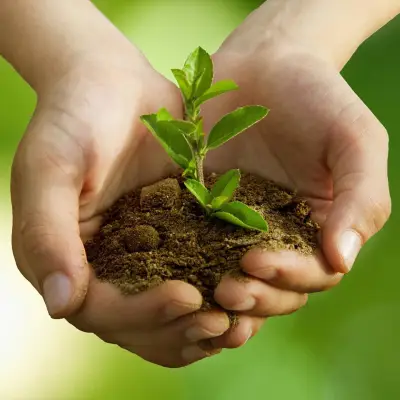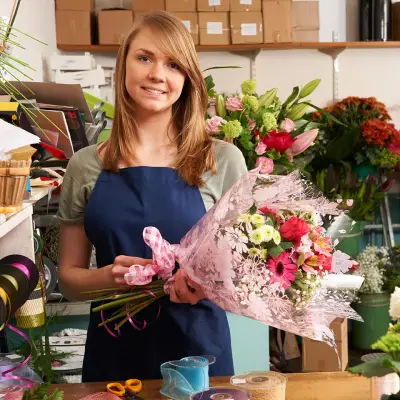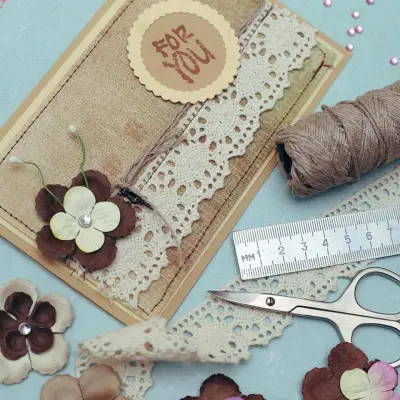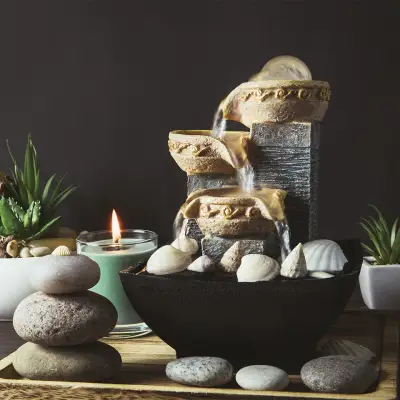With its enchanting fragrance and vibrant blooms, lavender is celebrated for its soothing properties and versatility in culinary and home uses. Whether you're a seasoned gardener or just starting out, growing lavender can be a rewarding experience.
This guide aims to demystify the process, providing simple, clear advice on nurturing your lavender plants. From selecting the perfect spot in your garden to ensuring your lavender thrives through the winter, we've got you covered.
Jump to:
- Where to Plant Lavender in Your Garden
- Lavender Soil Requirements
- Planting Lavender: Timing and Techniques
- Growing Lavender from Seeds
- How to Care for Your Lavender Plant
- Pruning Lavender
- How to Harvest Lavender
- Winter Care for Lavender
- Lavender in the Kitchen and Beyond
- How to Use Dried Lavender
- Common Questions About Growing Lavender
Where to Plant Lavender in Your Garden
Choosing the right location is the first step to successful lavender growing. Lavender thrives in full sunlight and well-drained soil. When considering where to plant lavender, look for a spot that receives at least six hours of direct sunlight daily. Lavender's roots dislike being wet for prolonged periods, so well-draining soil is a must. Consider raising beds or incorporating gravel to improve drainage if your garden soil is heavy or clay-like.
Lavender Soil Requirements
Lavender prefers alkaline soil with a pH between 6.5 and 7.5. If you're unsure about your soil's pH, a simple testing kit from your local garden centre can help. If your soil is too acidic, mix in some lime to create the ideal growing conditions. Lavender doesn't need highly fertile soil; in fact, too much nitrogen can reduce the fragrance of the flowers. A modest addition of compost or organic matter at planting time is usually sufficient.
Planting Lavender: Timing and Techniques
The best time to plant lavender is in the spring, as the soil is warming up. Late April to early June is ideal if you're in the UK. This gives your lavender plenty of time to establish its root system before the colder months. Follow these steps to plant your lavender successfully:
- Choose a sunny, sheltered spot in your outdoor space — and remember, lavender likes dry, sandy, nutrient-poor soil with a pH level between 6.5 and 7.5
- Dig a hole just large enough to contain your lavender's roots
- If you're planting multiple lavender plants, dig your holes two feet apart to allow room for growth and air circulation—and for the bees!
- To prevent root rot, toss a handful of small rocks into the hole. Lavender doesn't do well with wet roots, so good drainage is key to your plant's health.
- Prune off any dead or decaying parts of the plant so its energy will be directed toward new growth, shaking excess soil from roots and removing any torn or damaged parts.
- Nestle the plant's roots in the hole, fill it with soil and pat down
- Once planted, water your lavender deeply, soaking the roots, but do so infrequently and only when the soil is dry
- Prune dead or dying shoots promptly all year round, making sure to avoid cutting back to the woody stems
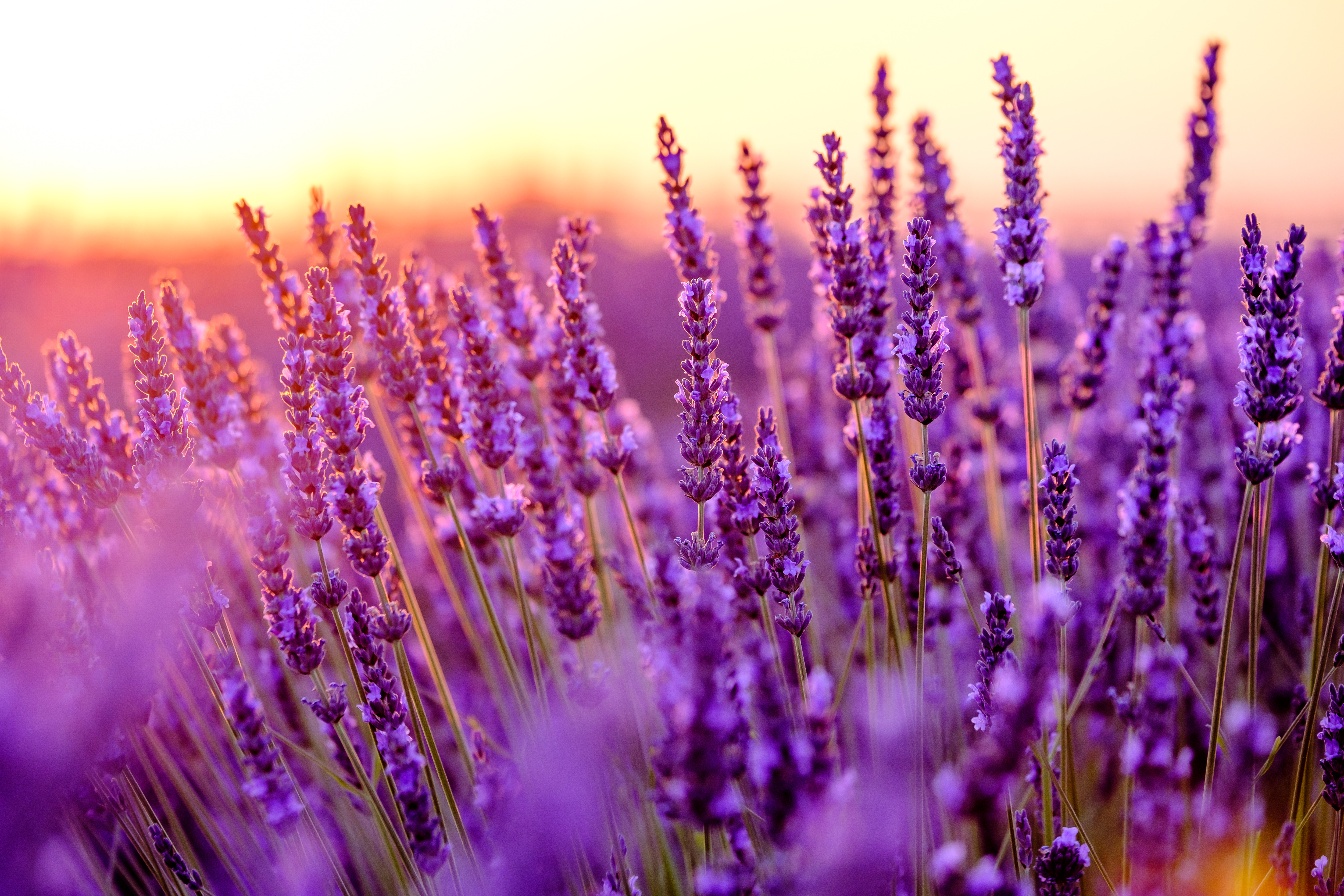
Growing Lavender from Seeds
Starting lavender from seeds can be more challenging, requiring patience and care. Lavender seeds should be sown indoors 6 to 8 weeks before the last frost date. Use a light, well-draining seed starting mix and place the seeds on the surface, pressing them gently into the mix without covering them, as they need light to germinate.
How to Care for Your Lavender Plant
Once established, lavender is relatively low-maintenance. However, there are a few key tips to ensure your plants thrive:
- Watering: Lavender is drought-tolerant once established, requiring water only during prolonged dry spells. Overwatering or poor drainage can lead to root rot.
- Feeding: Lavender generally does not require regular fertilising. If growth seems slow or the foliage is pale, a light feed with a general-purpose fertiliser in early spring can help.
- Mulching: A light mulch of gravel or sand can help improve soil drainage and reduce humidity around the plant's base.
Pruning Lavender
Pruning is essential for maintaining a bushy, healthy lavender plant. The best time to prune lavender in the UK is in late summer, after flowering, or in early spring. The aim is to shape the plant and encourage new growth without cutting into the old wood, as lavender can struggle to regrow from this. Remove about a third of the current year's growth to keep the plant compact and prevent it from becoming woody.
How to Harvest Lavender
When your lavender plant blooms, it's time to harvest it. There are differing opinions on when to begin the process, but you can start harvesting when the flower buds are swollen and the flowers are just beginning to open. It is recommended that you harvest in the morning hours, after the dew has evaporated, to take full advantage of the fragrance and concentration of oils.
Here's how to harvest your lavender:
- Cut the stems about 5cm above the wooden stem to avoid damaging the plant, using a pruner or harvesting knife
- Tie a bunch of stems no bigger than what you can hold in your hand (usually about 50 - 100 stems) together with string or a rubber band
- Rinse your lavender to remove dirt and pests, and keep it in fresh water until you’re ready to use it — this is especially important if you plan on eating the lavender.
- To dry your lavender, hang your bunches upside down in a dark, dry place with good circulation for a few weeks, retying them together as they shrink during the drying process.
- Seal the dried lavender in an airtight container
- Store in a cool, dry place that won’t drop below freezing
While fresh lavender can be great for decorative purposes, it only lasts a few days, so it's important to understand how to care for it. However, your dried lavender will hold its scent and oils for months, meaning you’ve got a lot of time to plan what to do with your plant.
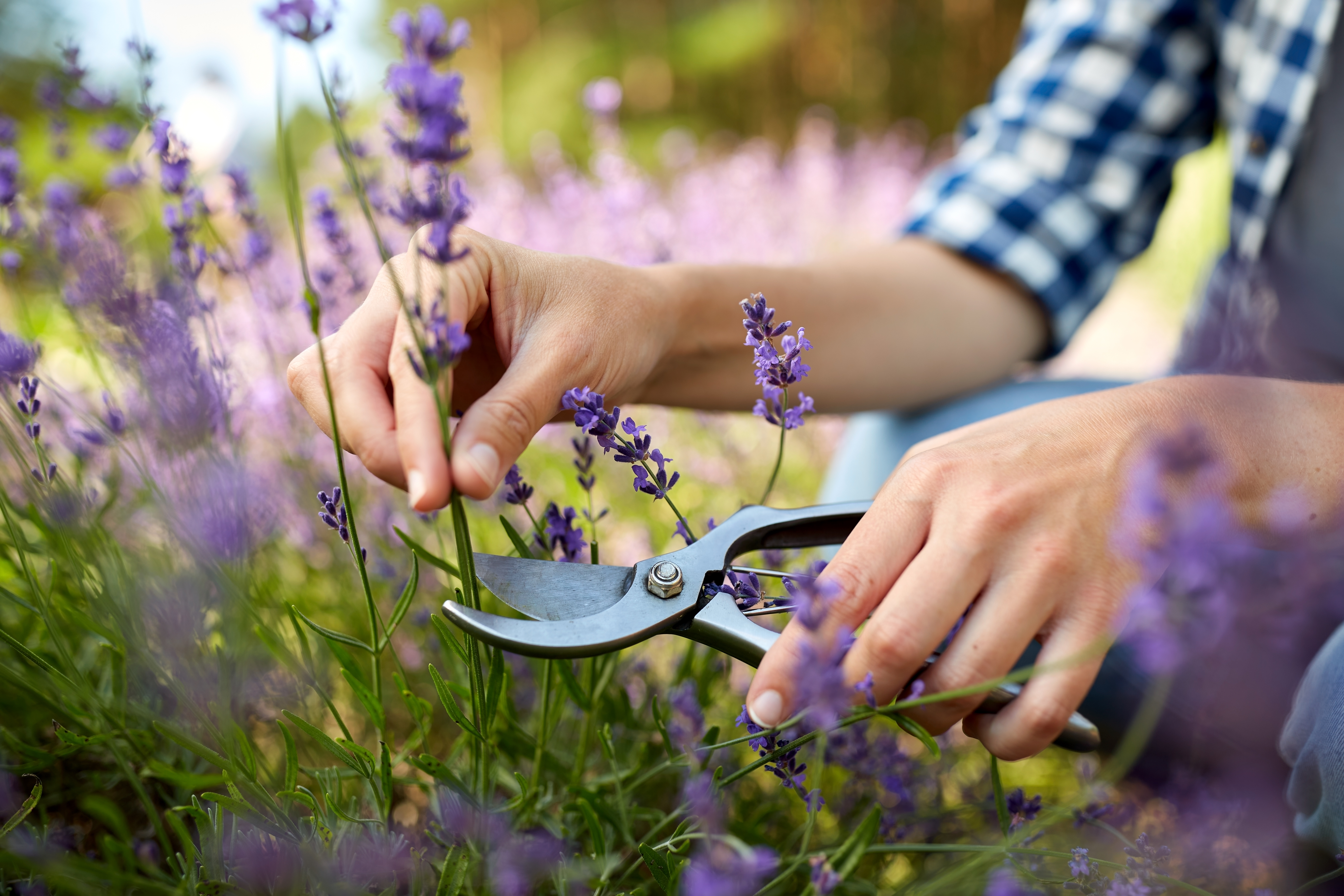
Winter Care for Lavender
In colder regions, lavender may need some protection from harsh winter conditions. While many varieties are hardy, young plants can benefit from a light mulch of straw or evergreen boughs to protect against frost. Potted lavender should be moved to a sheltered location or indoors if severe frost is expected.
Lavender in the Kitchen and Beyond
Lavender is not just a feast for the eyes; it's also a versatile herb for culinary uses. Its flowers can add a floral note to baked goods, jams, and savoury dishes. Remember, a little goes a long way due to its potent flavour. Lavender also makes excellent sachets, essential oils, and natural remedies, showcasing its multipurpose nature.
How to Use Dried Lavender
Drying lavender is a simple process that captures the essence of this delightful herb for various uses. After harvesting lavender in the morning, when the oils are most concentrated, tie the stems in small bunches and hang them upside down in a dry, dark place with good air circulation. This method ensures the lavender dries evenly, retaining its colour and fragrance. Within a few weeks, your lavender should be dry and ready for any creative uses you have in mind.
Dried lavender offers a multitude of creative and therapeutic uses. Here are some ideas to inspire you:
- Sew lavender into sachets to tuck into pillows for a restful sleep and a sense of relaxation.
- Craft a lavender amulet to wear, believed by many to deepen your spiritual connection with the universe.
- Place a lavender wand in your wardrobe to keep your clothes moth-free and imbued with a fresh, delightful scent.
- Experiment with culinary delights like lavender cookies, adding a unique flavour to your baking.
- Infuse dried lavender buds into your favourite oils to create soothing skincare and wellness products.
- Turn lavender into a magical flower crown, perfect for special occasions or to add a touch of enchantment to your everyday.
- Use dried lavender in energy healing rituals, crafting sticks that some believe promote a positive energy flow.
- Create beautiful home decor items such as wreaths, flower arrangements, or potpourri, bringing a touch of nature indoors.
- Elevate your bath time with homemade lavender bath bombs, bath salts, and soaps for a luxurious cleansing experience.
- Enjoy a cup of lavender tea, acclaimed for its potential benefits in promoting restful sleep and alleviating nausea.
These ideas are just the beginning of what you can do with dried lavender. Its versatility and delightful fragrance make it a favourite for many creative and wellness-focused projects.
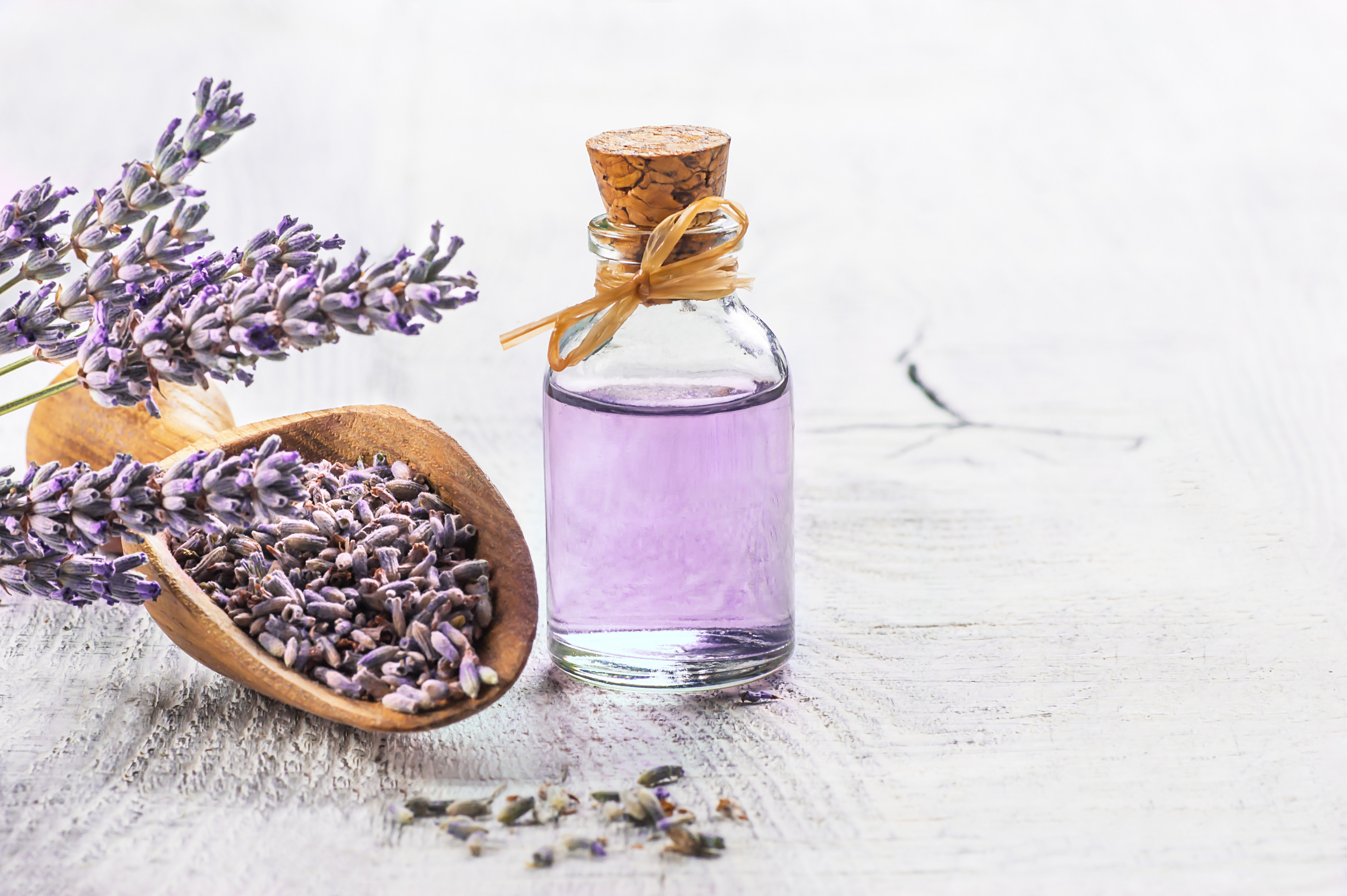
Common Questions About Growing Lavender
- Is lavender easy to grow? Yes, lavender can easily grow with the right conditions—full sun, well-drained soil, and minimal watering.
- How quickly does lavender grow? Lavender grows moderately fast, reaching full size in about two to three years. However, you'll likely see blooms in its first or second growing season.
- Should lavender be cut back? Annual pruning is essential to keep lavender plants healthy, bushy, and productive. Without cutting back, lavender can become leggy and woody.
- Do you deadhead lavender? Deadheading or removing spent flowers can encourage a second bloom and prevent the plant from using energy to produce seeds.
- Can I cut lavender back to the ground? Cutting lavender back to the ground is not recommended as it may not regrow. Always leave some green, non-woody growth on the plant.
- How do you make lavender bushy? Regular pruning, especially in the early years, encourages a bushy growth habit. Cut back about one-third of the new growth each year.
- Should I cover my lavender for winter? In very cold climates, a light covering can help protect young plants, but mature lavender often survives winter without any extra protection.
- Why is my lavender in pots dying? Overwatering is a common reason for lavender dying in pots. Ensure your pot has good drainage, and let the soil dry out between waterings.
Recommended for you!
Best SellersDiscover the Art of Herb Gardening with Centre of Excellence
Become a master at herb gardening with our comprehensive Herb Gardening Diploma Course, designed to unlock the full potential of your green space.
Why Centre of Excellence?
- Inclusivity: We believe that transformative education should be accessible to all, so our courses are affordable, ensuring everyone has the opportunity to learn.
- Learn on Your Terms: Our courses are crafted to fit seamlessly into your life, offering the freedom to learn at your own pace, wherever and whenever it suits you best.
- Diverse Learning Spectrum: Dive into a wide range of topics within herb gardening and beyond, meeting the varied interests and needs of our global learner community.
- Dedicated Support: Enrolment means joining a supportive network that will guide you through every step of your educational journey, including personalised tutor feedback and a vibrant learning community.
Exclusive Offer
We are excited to present our Herb Gardening Diploma Course at the exceptional price of £29, saving you over £100!



